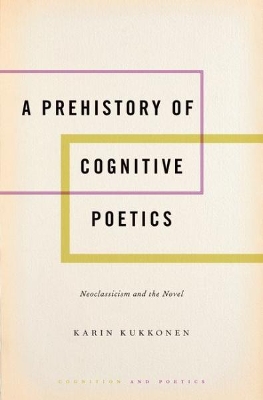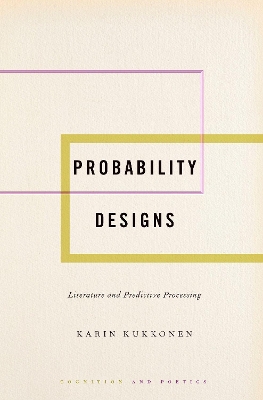Cognition and Poetics
2 total works
This study provides an introduction to the neoclassical debates around how literature is shaped in concert with the thinking and feeling human mind. Three key rules of neoclassicism, namely, poetic justice (the rewards and punishments of characters in the plot), the unities (the coherence of the fictional world and its extensions through the imagination) and decorum (the inferential connections between characters and their likely actions), are reconsidered in light
of social cognition, embodied cognition and probabilistic, predictive cognition. The meeting between neoclassical criticism and today's research psychology, neurology and philosophy of mind yields a new perspective for cognitive literary study.
Neoclassicism has a crucial contribution to make to current debates around the role of literature in cultural and cognition. Literary critics writing at the time of the scientific revolution developed a perspective on literature the question of how literature engages minds and bodies as its central concern. A Prehistory of Cognitive Poetics traces the cognitive dimension of these critical debates in seventeenth- and eighteenth-century Britain and puts them into conversation with today's
cognitive approaches to literature.
Neoclassical theory is then connected to the praxis of eighteenth-century writers in a series of case studies that trace how these principles shaped the emerging narrative form of the novel. The continuing relevance of neoclassicism also shows itself in the rise of the novel, as A Prehistory of Cognitive Poetics illustrates through examples including Pamela, Tom Jones and the Gothic novel.
of social cognition, embodied cognition and probabilistic, predictive cognition. The meeting between neoclassical criticism and today's research psychology, neurology and philosophy of mind yields a new perspective for cognitive literary study.
Neoclassicism has a crucial contribution to make to current debates around the role of literature in cultural and cognition. Literary critics writing at the time of the scientific revolution developed a perspective on literature the question of how literature engages minds and bodies as its central concern. A Prehistory of Cognitive Poetics traces the cognitive dimension of these critical debates in seventeenth- and eighteenth-century Britain and puts them into conversation with today's
cognitive approaches to literature.
Neoclassical theory is then connected to the praxis of eighteenth-century writers in a series of case studies that trace how these principles shaped the emerging narrative form of the novel. The continuing relevance of neoclassicism also shows itself in the rise of the novel, as A Prehistory of Cognitive Poetics illustrates through examples including Pamela, Tom Jones and the Gothic novel.
In Probability Designs, Karin Kukkonen proposes a new perspective on the complex role of predictions and probabilities in the dynamics of literary narrative. Predictive processing, an emerging account of cognition in neuroscience, psychology, and philosophy, provides the theoretical backdrop for an investigation of how literary texts shape readers' expectations and experience. Through deft analysis of the literary canon in a variety of cultures and
languages, she constructs a comprehensive model of probability in a novel's plots, immersive appeal, and potential for reflection. Linking predictive processing to the idea that culture and cognition always develop in tandem, Kukkonen then sketches a place for literature and literary form in this exchange - a mode of
exploratory thinking that takes language and writing to the next level.
Chance encounters, last-minute rescues, and coincidences launch Kukkonen's investigation of the literary manipulation of predictions. Through an enlightening blend of cognitive sciences and literary theory, Probability Designs enriches scholarly debates in literary studies and sheds light on how vital literature is for human thought.
languages, she constructs a comprehensive model of probability in a novel's plots, immersive appeal, and potential for reflection. Linking predictive processing to the idea that culture and cognition always develop in tandem, Kukkonen then sketches a place for literature and literary form in this exchange - a mode of
exploratory thinking that takes language and writing to the next level.
Chance encounters, last-minute rescues, and coincidences launch Kukkonen's investigation of the literary manipulation of predictions. Through an enlightening blend of cognitive sciences and literary theory, Probability Designs enriches scholarly debates in literary studies and sheds light on how vital literature is for human thought.

